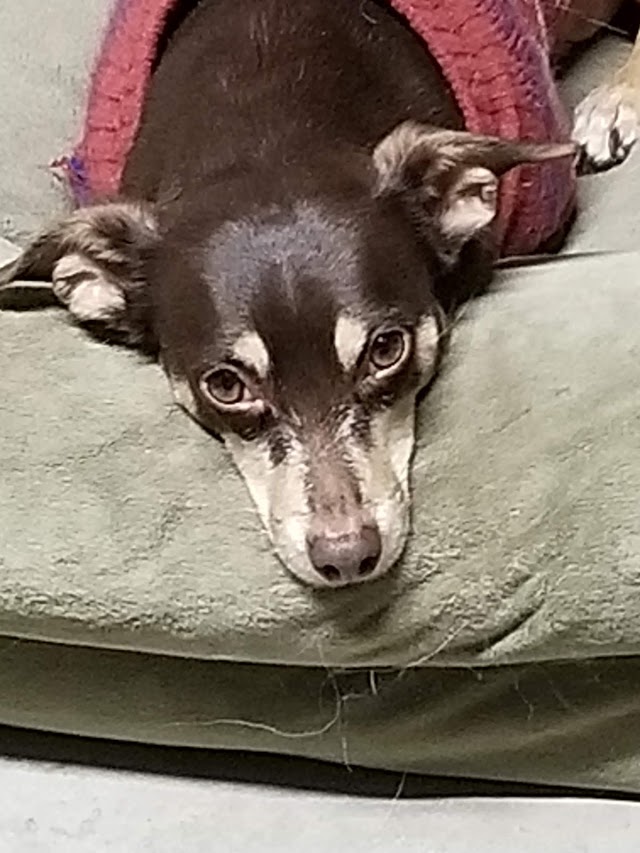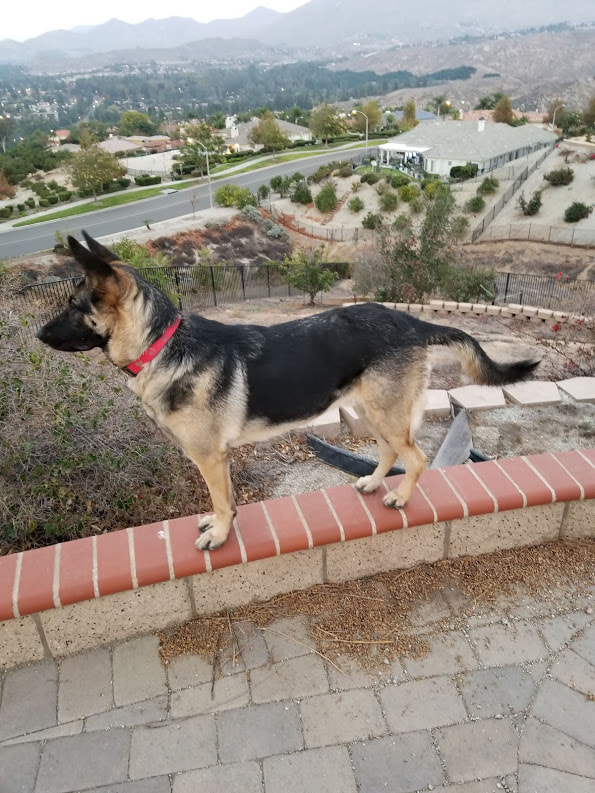 People go on a diet because they realize something needs to change. Usually it is for health reasons. The desire to improve one’s appearance or perhaps to make fitness activities more fun and easier. People too, start dog training because they realize something needs to change. Usually there is a new puppy or behavior issues with an older dog or maybe they just want to make life with their dog, more fun and easier. Both endeavors usually start with great enthusiasm. With a little concerted effort, progress can be seen right off the bat. You might drop 5 pounds in the first week or two. That’s exciting! This diet thing is working! With your dog, they are learning some basics like sit, down and come. That's exciting! This training thing is working! Then some time passes. The diet is getting a little harder to stick to. Some of the old habits start creeping back into your life. The weight loss slows or maybe even reverses. This diet stuff is hard! With your dog it is much the same. He "knows" how to sit, lay down and come when called, well, sometimes. You've slacked off on the training or maybe quit all together. Now it looks like he obeys just when he wants to, stubborn little guy. This training stuff is hard! Things in life that require a lot of practice also require a lot of persistence and dedication. Giving up too soon just doesn't cut it. Learning how to create, develop and maintain good habits is one of the most important life skills we can accomplish. Once those habits are solid, they serve us! We no longer have to think about it. It's what we do. It's who we are. We can largely run on autopilot. A diet is no longer a phase. It's not what we do for a few weeks. It's a lifestyle change with ongoing rewards. Training your dog is no longer a phase. It's a lifestyle you share with your dog. It's how you communicate with this wonderful creature from a different species. It makes life better for you and the dog. And when you fall off of the wagon, you can always get right back on. Your body is ready, willing and able to respond to your healthy lifestyle plan. And your dog is ready, willing and able to respond and partner with you in Reward-able Opportunities, sometimes called dog training.
0 Comments
 Most dog training is more easily done by following a specific sequence of steps, done in a specific way. What you are looking for is the best way for your dog to learn. One that is easy for them. We want to communicate clearly; in ways they can understand. We also want to respond to how the dog is catching on to what we are doing and change course when they are not catching on. This requires us to watch the dog carefully for signs as to how they are “understanding” what we are asking of them. It might be helpful to think about how a 1 or 2-year-old relates to words and how we might teach children of that age. I’m reminded of Denzel Washington in the movie Philadelphia saying to Tom Hanks “Explain this to me like I’m a two-year-old, because there’s an element to this that I can’t get through my thick head” If we were trying to teach a toddler the word “ball” for example. We would probably first get eye contact. Then say “BALL” in a clear perhaps, exaggerated, friendly tone of voice while showing her the ball in our hand. Then we might hand her the ball and say “this is a BALL”, do you want to play with the “BALL”? And we would patiently do this over and over again. After many repetitions you might ask “where is your BALL “? And the little girl might look around in search of her ball indicating that she had made the association between the object and the word. If she wasn’t catching on you wouldn’t say BALL, BALL, BALL, BALL, FIND YOUR BALL. You would probably start over, showing the ball, saying the word ball and and patiently doing that many times. Then go back and see if she now had made the association. Well guess what? Dogs learn words in very much the same way by association, through repetition. My suggestion is to teach your dog like they were a toddler. They might just learn much faster. Being a good dog "parent" is like being a cop.
"Protect and Serve" is the sign often seen on the side of police cars. The idea hear is to protect citizens and serve the public. It makes me think of our role with our companion dogs. First we need to protect them. That covers a lot of ground but includes making sure they are healthy and safe from harm. We have a secure yard so that they can't get out and get lost or hurt. On our dog walks we protect them from getting hit by a car or attacked by an off lead dog. It means regular vet visits and a good diet and exercise plan. There are so many ways we need to protect our dogs. We also serve them. We are their companions. We provide opportunities for them to be with us and do things together. We play together,explore together, cuddle together and sometimes sleep together. We are serving their animal needs. So I guess in some ways we are the police for our puppies, in a really good way. Canine Enrichment for the Real World
Published 2019 Out of my 100 plus dog books this one is going to rank at the top of the list. It's not a step-by-step training book Per-Se. It is very comprehensive at explaining what dogs need in total and how we can better accomplish that. And there is a good focus on the human element, us. Sometimes it's overwhelming. And the more you know the more overwhelming it can seem. The authors understand us as well as our dogs and have some instructive and comforting advice for us. With the goal of encouraging you to get and study this book, here are some of the questions this book answers.
Let me know if you get it and what you think of the book. I love it! Why is the concept of "choice" so important in dog training? Giving your dog choice is basically letting them decide what to do or not do without much intervention from you. This will:
If he doesn't sit what is your response? Do you view the request to "sit" a "command"? Is your dog being "disobedient"? Is he challenging your "dominance", as the "alpha" in the family? No, he just didn't choose to sit, for his own reasons and we should be OK with that. Respecting the dog's right to choose has many benefits:
We know that autonomy and choice are important to us humans too. Children learn faster and are happier when they have autonomy. Employees are happier and more productive when they are not micromanaged. The same is true with our relationship with our dogs. I hope you will consider the concept of choice as an integral part of your relationship with your dog.
At Starbucks the other day I ordered a vente, non-fat, decaf late, and the barista said "Oh you want what we call a why bother" I thought how… appropriate. It also started me thinking about what I do, dog training. What would say if someone ask me "Hey why bother"? Don't we all know how to have a dog in our lives? Isn't it really pretty simple? For some people that may in fact be true. So I started making a list of possible reasons to go ahead and Bother. Possible benefits of some formal dog training.
Resources I recommend : 4 books , 1 online magazine and 2 newsletters. Book #1 The power of positive dog training by Pat Miller.A renowned dog trainer gives you the positive training tools you need to share a lifetime of fun, companionship, and respect with your dog. Plus, you'll get: information on the importance of observing, understanding, and reacting appropriately to your dog's body language; instructions on how to phase out the use of a clicker and treats to introduce more advanced training concepts; a diary to track progress; suggestions for treats your dog will respond to; and a glossary of training terms. Updated with the latest tools and techniques—including the clicker method Renowned dog trainer Pat Miller gives you the positive training tools you need to ensure that you and your dog share a lifetime of fun, companionship, and respect. Following her step-by-step, six-week basic training program, you'll learn how to develop a relationship with your dog based on friendship and positive reinforcement, not fear and punishment. Plus, you'll get:
For the Love of a Dog and The Other End of the Leash both by Patricia McConnell Patricia is a certified animal behavior asst and the highly recommend everything she has done. Click here to subscribe to her newsletter which is very informative. https://www.patriciamcconnell.com/join-the-pack Book # 4 The Culture Clash by Jean Donaldson A revolutionary new way of understanding the relationship between humans and domestic dogs Online magazine: thewholedogjournal.com $20 yr. Access to past issues. Excellent search function. In depth articles. Outstanding contributing authors like Pat miller. Also good web site Companion animal psychology https://www.companionanimalpsychology.com/?m=1 If you've decided to get some training for your dog, what goals might you have in mind? Most people think in terms of gaining control and getting an obedient dog. I would like to suggest that you think about what you would like your dog to "be"as opposed to what your would like your dog to "do".
While these things go together, one causes the other to happen. When we look at what a dog can "do", it puts the focus on the dog and his behavior. When we look at what a dog can "be", it puts the focus on what we humans need to do to set things up for success. This puts our overall goals in a very positive manner. The more we look at our behavior and how to make it easy and fun for our dogs to succeed, the better results we will get. Let's look at a possible list of under each category, "doing and being". What are some things we would like our dogs to "do and not do"?
So then what are some of the things we would like our dog to "be"?
So what might be the impact of an approach like this?
I would suggest that we start with what we want our dogs to be, confident, secure and ready to engage in a life with you. I think this sets us up for success. If your dog feels good he will be a natural learner. This will also sharpen your observational skills as you progress through your training. |
AuthorI am a dog trainer in Riverside California. My specialty is Companion Dog Training. Helping your dog to live in your home. Archives
September 2020
Categories |
 RSS Feed
RSS Feed